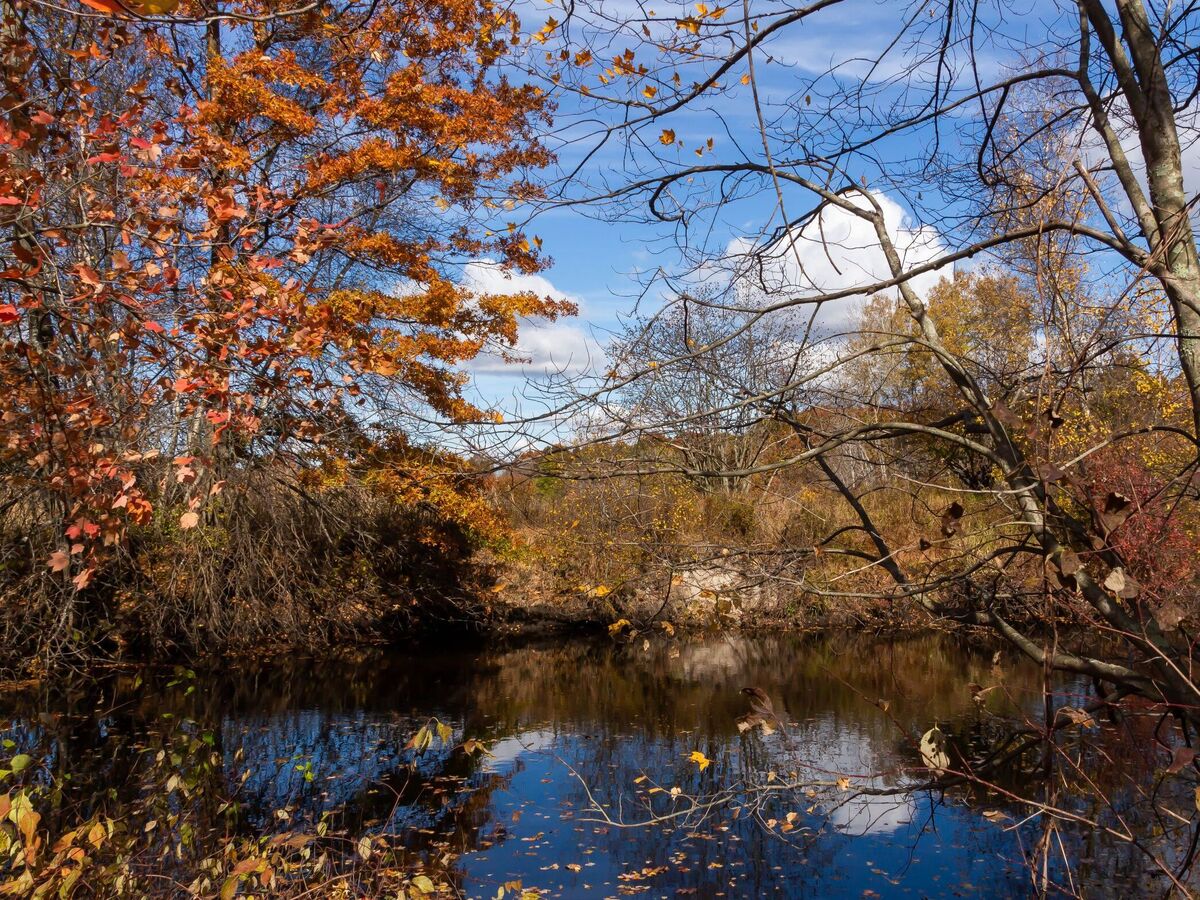Image


Above is a portion of the image, Fall 2019, Neponset River Reservation, by Bill Iiott from Flickr
Recently this July, the U.S. Environmental Protection Agency issued its very first report card grades for the Neponset River Watershed, and 2 of Westwood’s streams rank 22nd and 23rd on a list of twenty-five bodies of water. Using data collected by citizen scientists, the EPA report card monitors water quality for swimming and boating by focusing on E. coli, an indication of fecal contamination.
Germany Brook received a D+, meaning that based on E.coli monitoring results, it meets water quality standards for swimming and recreation 50.1 percent of the time. Purgatory Brook’s D- grade means it meets those standards 45 percent of the time.
While it may not be common to see anyone swimming or boating in Germany or Purgatory brooks, River Restoration Director Jennifer Rogers of Neponset River Watershed Association notes that people and animals do interact with those streams.
Local fisherman may wade through swampy places. Neighborhood children may play in the water. Local pets and other animals may splash in or drink from them. Therefore, it’s important to monitor bacteria levels so that people and animals avoid getting an unexpected dose of pathogens, says Ms. Rogers.
Additionally, these local brooks flow into larger bodies of water. Germany Brook flows into Ellis Pond which goes to the Neponset River and the Neponset Estuary. The water quality of larger recreational bodies of water depends on the smaller streams that feed into them.
Why did Westwood’s streams do so poorly in this report? Ian Cooke, Executive Director of Neponset River Watershed Association, is not entirely sure.
He believes that there may be an infrastructure problem feeding into Germany Brook. However, he also notes that this would be surprising, as he believes that infrastructure in Westwood is generally sound.
He observes that the report card represents an aggregation of sampling stations that include monitoring locations outside of Westwood. The source of the contamination may or may not be from Westwood.
The E.coli contamination could be due to malfunctioning of sewer or septic systems. It may result from unusual concentrations of wildlife along the stream. Another possibility is run-off from paved surfaces.
“It could be people not realizing that a rain drop falling on the roof of your house ends up in Dorchester Bay,” he says.
Mr. Cooke gives the example of people throwing trash into storm drains, under the misapprehension that the water will be treated in a water treatment facility. To the contrary, what is deposited in a storm drain almost always goes straight into streams, he says.
Mr. Cooke recalls how a few years ago, Canton’s Department of Public Works was faced with flooding from a blocked storm drain. After spending thousands of dollars over several days digging to get at the root of the problem, an immense number of “dog poop bags” were found blocking the pipe.
Mr. Cooke and Ms. Rogers encourage residents to contact Neponset River Watershed Association if they observe a possible source of the contamination. For example, residents may see a neighbor regularly dropping pet waste into a storm drain. Or, residents may notice a storm drain running with water when there has been no rain. This could indicate a problem with the sewer infrastructure.
And what can residents do to protect the health of their streams, and by extension, the larger bodies of water that people swim and boat in?
Again, Mr. Cooke emphasizes the importance of properly disposing pet waste into a trash receptable rather than a storm drain.
Also, using lawn chemicals and fertilizers sparingly can help reduce run-off pollution.
Conserving water in home appliances and being careful with lawn watering is yet another way. As water demand increases, more water is removed from the river aquifer. The withdrawals mean the ability of water to dilute pollution in rivers is decreased.
Lastly, in a town like Westwood where its citizens effectively act like a legislature (see Article II of Westwood's Bylaws regarding procedures for municipal business), it can be important to support investment in sewer and storm drain system infrastructure each and every year. Along with supporting sewer infrastructure funding requests, Westwood could require developers to capture rain run-off, says Mr. Cooke. A rain garden, or an “intentional puddle,” would be one way to do it. Strategic diversion of rain run-off into the natural filter of the earth is preferred, rather than onto pavement where rain water may carry surface contaminants, untreated, into the storm drain.
Thanks to Ms. Jennifer Rogers and Mr. Ian Cooke of Neponset River Watershed Association for being interviewed for this article.
Updated 08/11/2021 at 5:10 p.m. A correction was made to reflect that the EPA report card reviewed twenty-five bodies of water, not twenty-four as previously stated.